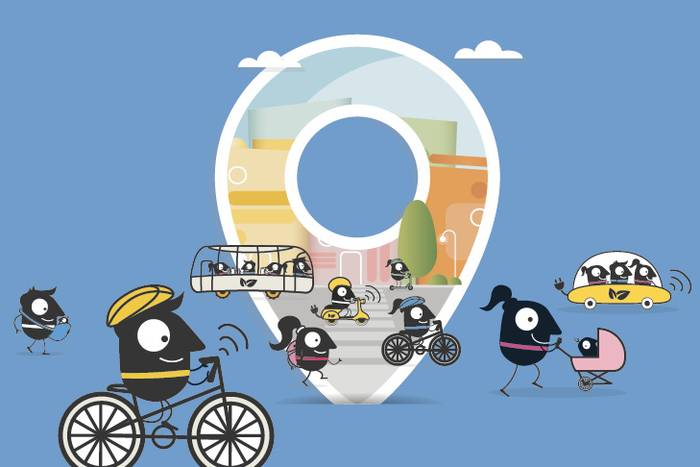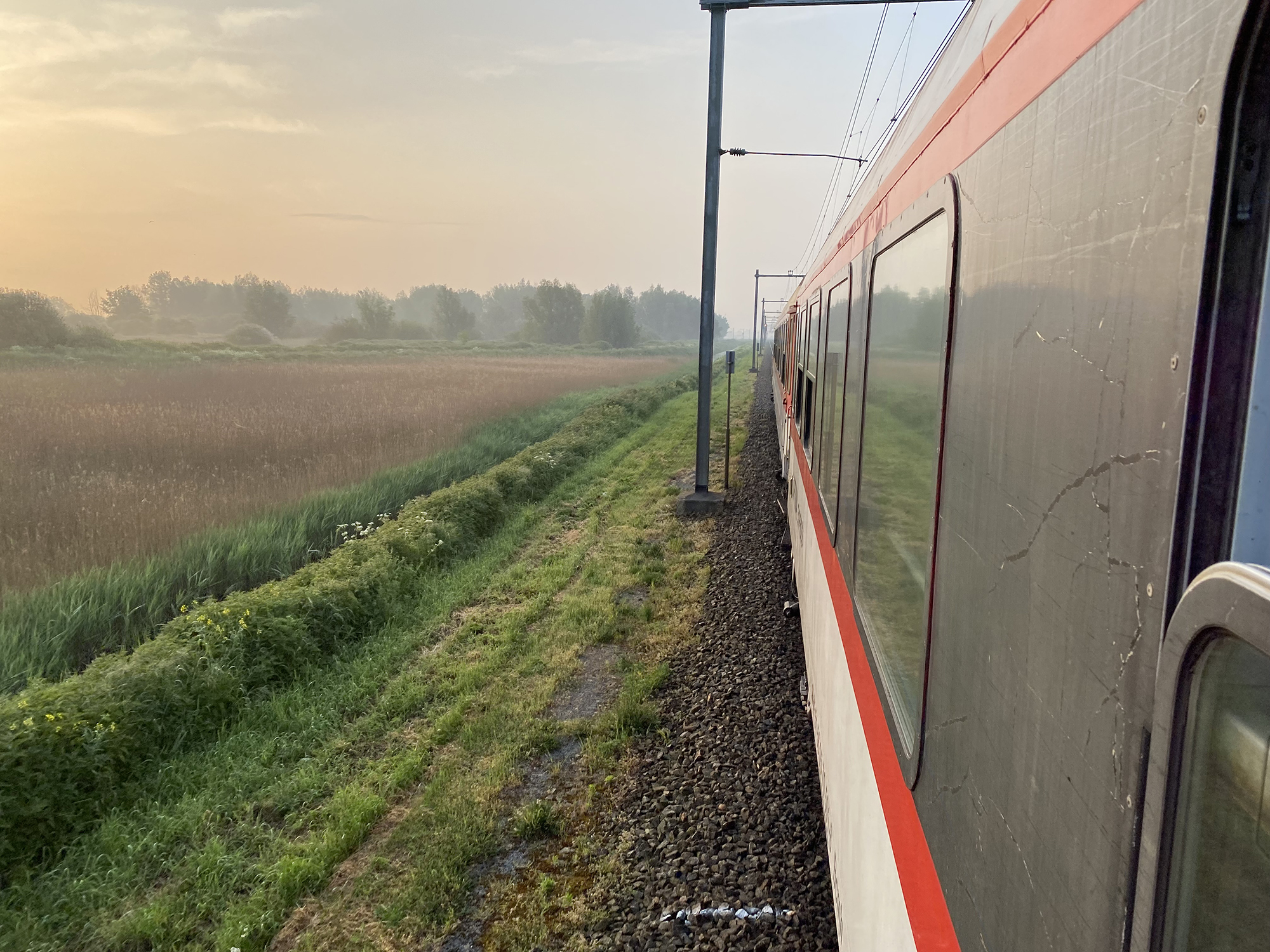How do you eat the space you ate?
- On March 22, 100 days from the start of the Tour de France, Mayor Juan Mari Aburto landed at the San Mamés stadium in Bilbao. He traveled in the middle of a platoon of people, on a red electric bicycle with the logo of the rental service to Bilbaobiz, to show that he will be one of the main institutional allies on the road to sustainable mobility. But the rulers, and ourselves, are we close to advancing on that path? Are we prepared to revolutionize the distribution of space and to banish the car, the king of the jungle? What role will the bike play or should it play? They sold Bike Country at the brilliant Grand Départ, but Eneko Garate, head of the editorial Libros de Ruta, doubts. The geographer and mobility advisor, Ander Irazusta, for his part, states that we must change focus: “Don’t ask how much bicycle use has gone up in your village, but how much the car has gone down.” Edu Otxotorena, a member of the Gurgune project, explained that if mobility is to be sustainable it must also be inclusive; and Fran Úbeda, a member of the Joan cycle logistics cooperative, told us about the precariousness of the sector and the importance of ensuring decent working conditions. Sustainable mobility is what forces many actors to understand each other. We have addressed one of them, convinced that its use will increase if it is believed.

“The bicycle will be truly sustainable the day you replace the car in a house,” we loved. “Electric bicycle? I don’t know, people are mostly engaged in leisure, the rest little.” We have started talking to a report published in Resilience.org: Can we make bicycles sustainable again? (“Can we make bicycles sustainable again?”), written by the flamenco Kris de Decker. In essence, the author states that, despite being the most sustainable means of transport, the bicycle leaves an ever deeper footprint on the environment, due to the large amount of resources required for its manufacture and the shortest time between the life cycle, the first use and the final abandonment of a person.
Until the 1980s, most of the bicycles were made of steel, and then we discovered those of aluminum, carbon and titanium. Each material has different characteristics in terms of lightness, durability or recyclability, but in general, the manufacture of bicycles requires very significant amounts of electricity and water, as well as its transport or damage repair from the production sites, with China being the largest producer, due largely to the success of the electric bicycle that has revolutionized the market, which requires lithium, copper, magnets.
Although it is true, he must be one of the main drivers for changing the city model, as explained by his interlocutors. It is essential to make it a comfortable and safe means of transport and to steal some space from larger vehicles. It's striking that when we talk about sustainable mobility, we look at the car as much as we go to apologize, as a sign of the power accumulated over many years.
Project Member
EDU OTXOTORENA Wheels
“Electricity is needed if we want the bicycle to be a real alternative”
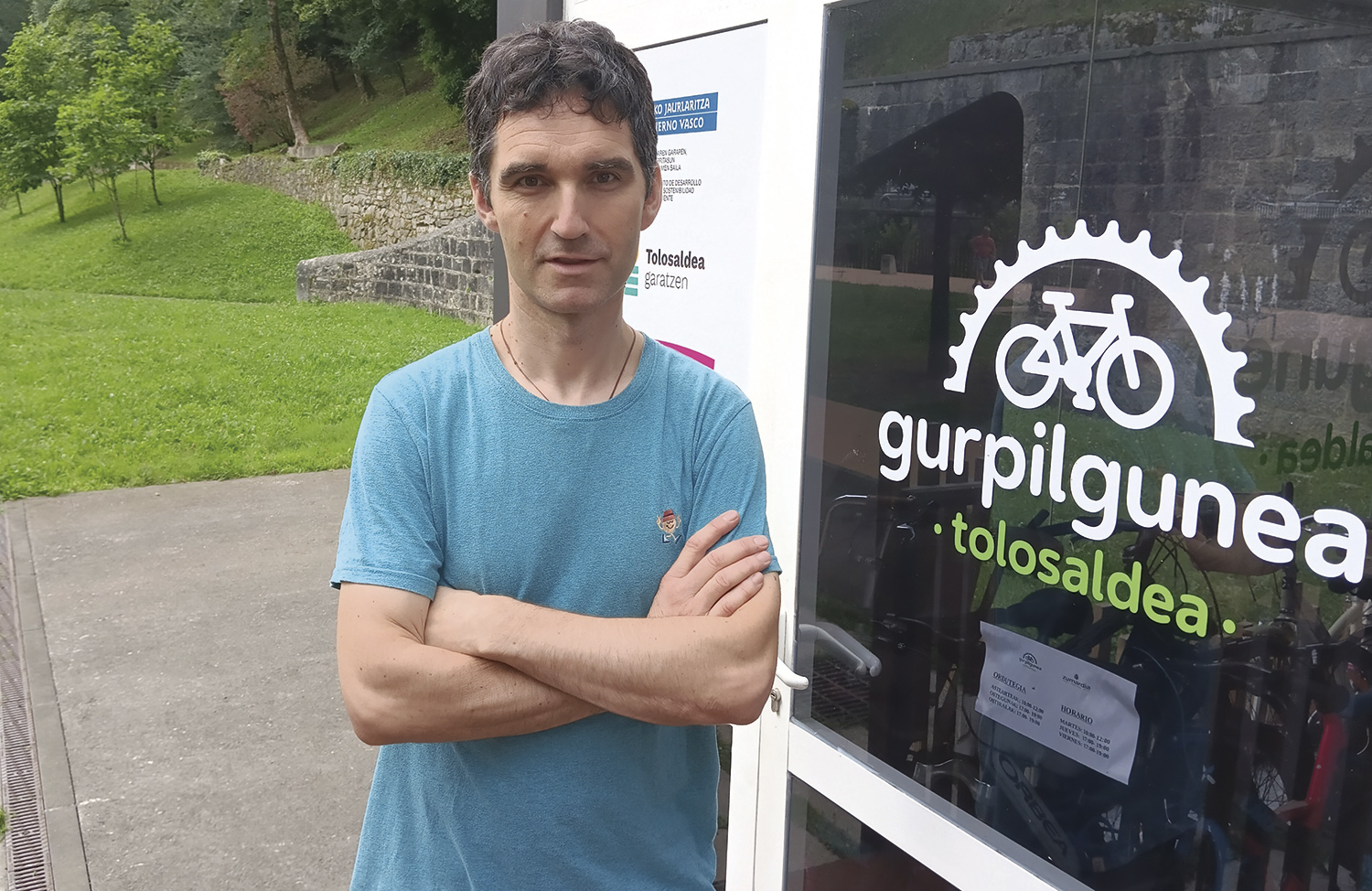
The completion Edu Otxotorena completed the Degree in Environmental Sciences at UNED University in 2022 and in his final work he addressed the theme that bound us: Education for sustainable bicycle mobility: road safety and citizen participation (“Education for sustainable cycling mobility: road safety and citizen participation”).
We have quoted ourselves in Tolosa, in the shadow of the trees of the Gran Alameda Park. There is the Wheels space, inaugurated in September 2022. The bike repair workshop occupies almost the whole width. We've seen a dozen used bicycles, all kinds of tools and lots of used parts. The objectives are, on the one hand, to revitalise segregated bicycles and, on the other, to allow the partners, who pay EUR 15 a year, to repair their own bicycles.
The project runs a group of volunteers linked to the Zumardia association, supporting the role of the bicycle on the road to a sustainable mobility model. One of them is Otxotorena. The dialogue comes “in a piece of iron,” the old relative of modern bikes that go along with rockets. “He is 25 years old and my bond with him is fundamentally affective.” No temptation to buy a new one? “I’ve tried some, they’re really light and thin. And the safety of the new brakes is wonderful.” Safety is a very important factor for bicycle development in every way. And comfort. “With the electric bike we have made a big leap. I know there's romance that you don't see with good eyes, which is the amount of CO2 that is poured into manufacturing, the batteries -- but it's a necessary step if we want the bicycle to become a real alternative. Troglodites like me are not examples of an attractive and effective alternative. We cannot leave the bicycle in the iron age. But I'm not going to change it. It compensated for CO2 emissions a long time ago, it already has its debts paid, but... The day will come when I will buy electricity when the fight between the companies that do it is reduced and prices are reduced. Meanwhile, wait.”
“Sustainable mobility must be inclusive, not just for the elite,” says Otxotorena. They work with the Transverse Refugee Defense Association, Tolosaldea Sahara and the Zutani solidarity project, schools...”
In the Wheeled Zone the bikes are sold and those taken from the Garbigune. “They are medium-low range, they are very suitable for their easy and economical repair. Otherwise the project would not be viable. They are not ideal for a 150 kilometer stage, but they are ideal for enjoying their daily lives.” And for the burglars, they're not that attractive.
Once repaired, they channel bicycles to solidarity initiatives or to families with less resources. “If sustainable mobility has to be inclusive, not just for an elite,” says Otxotorena. They work with the Transverse Refugee Defense Association, Tolosaldea Sahara and the solidarity project Zutani, schools... “Teachers see if there are students with difficulty accessing the bicycle and we collaborate in educational centers and social services. Our users are of this kind, because we are not yet well known.” Do you receive a personal order? “No, we don’t do that, we don’t want to be competitors of businesses. But we run bicycle repair workshops. Basic repairs are simple. It’s worth trying because we save money and take over.”
Culture of the bicycle forgetting some ecologism
“Sustainable mobility is a very cross-cutting issue,” says Otxotorena. Capture well-being, mobility, energy cost, CO2 emissions, trade and industrial impact... “The bicycle can be an important transforming agent, but it should not be introduced with the funnel, at least in cities designed for cars. I don’t do many kilometers, a few orders, I take my son to the ikastola… Tolosa is a town comfortable to move by bike, the countryside, and only two kilometers long.” He believes that the bicycle culture is gradually being incorporated, which increases demand for leisure and that in “forced travel” (commuting to school or work) it is also used by many people, at least in Tolosa.
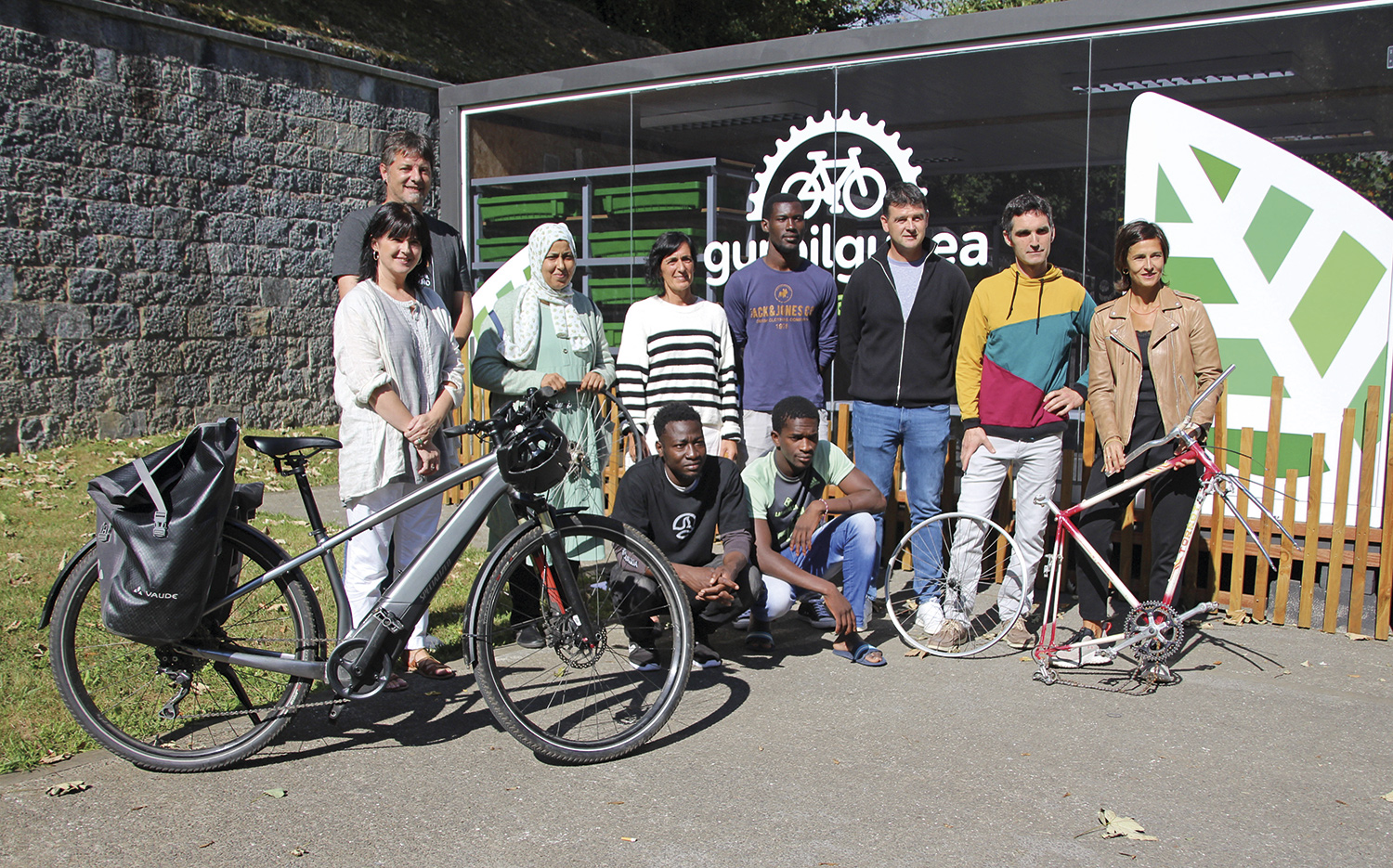
He doesn't think that the bike will replace the car. But they are complementary, and that is “positive”, it would be worse if no other means of transport were used. “I’m not going to judge cars,” he says. “The most important thing for me is to create a bicycle culture. In other European countries, for example, weather conditions are worse, but many people are cycling. We must be aware that the steps in favour of bicycles will not only benefit the user, but the whole of society, beyond the sporting perspective.”
He says that if we want to promote the bicycle, we would be “in vain” to seduce people continuously providing data on CO2 emissions, etc. “They’re directly related to climate warming, you can’t deny, but you have to mention the pleasure of selling the bicycle, which is the most important thing. Of course, it must also be a practical, convenient and safe means of transport.”
Project member Gurgune believes that when we talk about environmentalism, we often issue “somewhat apocalyptic” messages that, although they fit reality, may not be the most effective. “They cause a sense of disability in people: ‘There are no tasks anymore, so let’s continue as before, who am I to do anything.’ I have always believed in me and in the small steps given, because they will introduce a culture into my son. And then we're going to be two, like ants, hence strength. That the institutions do nothing? Well, I've at least done what I can, I'm at peace with the environment. I do not believe in institutions, in politicians, in our economic model.” Capitalism leads us to consumerism, to satisfy all desires quickly and not to look at what remains behind. “The bicycle partly reflects another model, claiming a quieter life.”
“The bicycle partly reflects a model other than capitalism, claiming a quieter life”
“In Euskal Herria we are very critical of some issues,” said Otxotorena, “the climate emergency worries us, we are aware of the risk, but we live in contradiction, so savage is the hunger for consumption of our society, that it is almost impossible to develop another life model”. It says that people have to prove that they want change, that they want another model of society and an urban organization, and that they are betting on more sustainable means of transport, because that will bring, if it brings, shake.
The revolution does not stop
“I would say the first jump was with the mountain bike, the second with the electric bike and the third with the COVID-19,” he explains. “A very nice revolution came about, suddenly everyone wanted a bicycle. We ‘cyclists’ couldn’t think about it. And the industry either. It surprised everyone. The culture of the bicycle was ours, all boys and girls like it, there's a lot of cycling fondness, and from that cocktail comes this kind of present bubble. It will burst, demand will drop, but the bike will not shrink because all the conditions push it forward. Rental systems in big cities, electric skateboards -- the rest of the planet wouldn't be viable."
ANDER
IRAZUSTA Consulting Member Bizier
“Don’t ask how much bicycle use has gone up in your village, but how much the car has gone down”
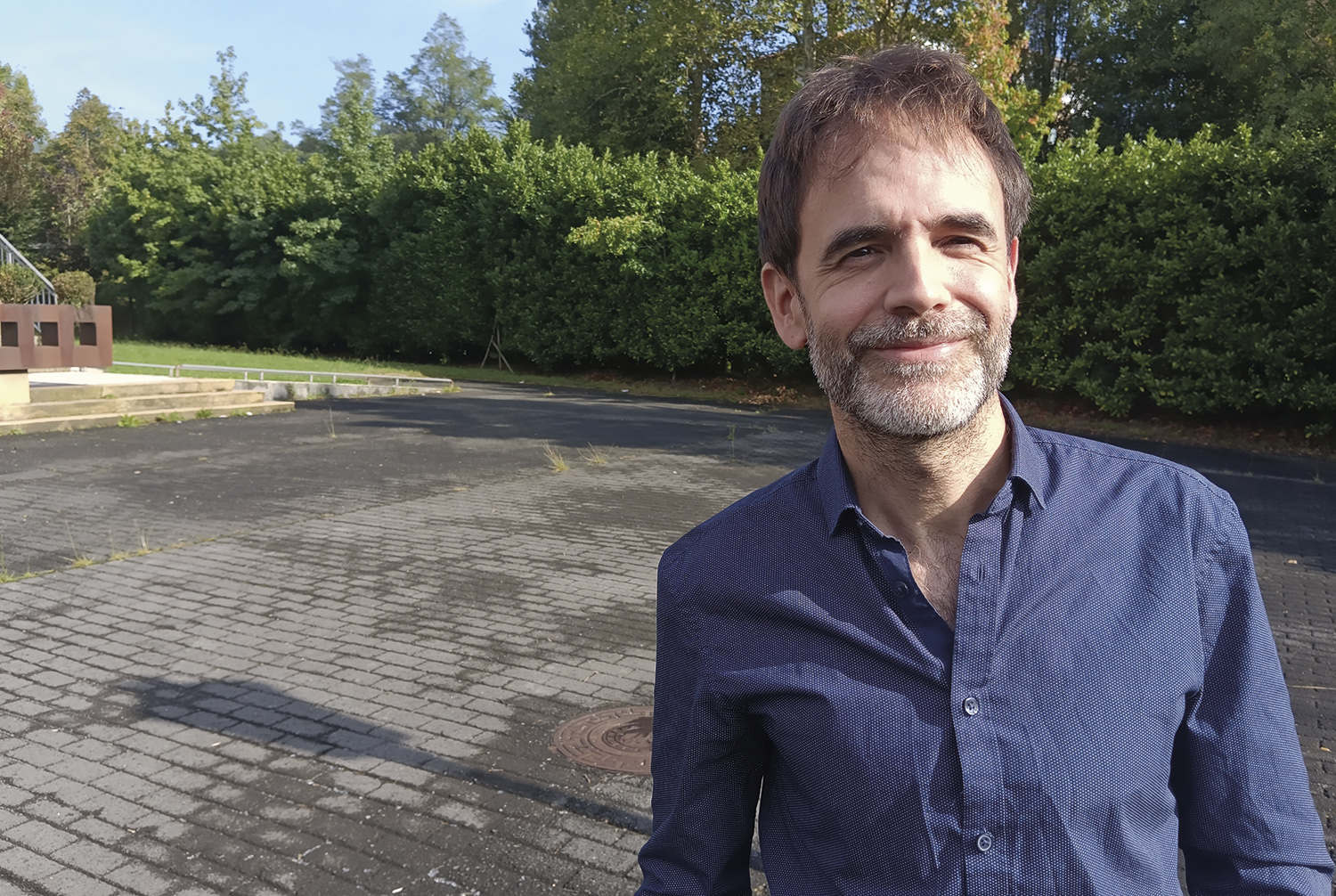
“The bicycle is not a panacea, but an essential ally, one more sustainable means of transport called to play a concrete role in a comprehensive strategy.” Before starting the questionnaire, geographer Ander Irazusta and consultant member Bizier have explained their opinion to us. We have associated the appointment in the municipality of Usurbil where you live. “The bike must adapt to each village. For example, here, where you can easily walk from one end to the other, it would not make much sense to take a lot of bicycle promotion measures, although basic infrastructure and minimum safety must be guaranteed. We should not think that, in terms of use, the target should be 30% Amsterdam or 40% Copenhagen.” The supply of public transport in the place of residence, the bidegorris network, the number of services or shops... will be more or less dependent on the car.
“Many years ago I heard the phrase that stuck with me: ‘Don’t ask how much bicycle use has gone up in your village, but how much the car has gone down.’ When we talk about sustainable mobility, the goal must be to reduce the abusive use of cars, such as combustion vehicles, electric vehicles.” CAPV data show that bicycle use has increased over the past 20 years, but trends have decreased: 35% of the trips made by car in 2016, 47% walking and 2% cycling. Well, in 2021, 40% were by car, 42% walking and just over 2% by bike. That is, more by car, less walking and by similar bike. “Many journeys of 3 to 4 kilometers are still made by car when the right distances to walk or bike are still good.” The aim, therefore, should be for car journeys to go by foot, by bicycle, by scooter or by public transport, “and not to transfer between the most sustainable means of transport, as is currently happening”.
Mobility is related to urbanism and the quality of urban spaces, according to Irazusta. “Currently, about 70% of the space is occupied by infrastructure linked to the car, when only 30% of the total number of car trips takes place inside the city. It’s scandalous, the imbalance is huge.” He explained to us that half or more of the space becomes more enjoyable when they are not cars but pedestrians or bicycles.
“Not being able to park the car under your house does not mean that there are parking problems in your village”
Conversely, despite efforts to promote sustainable mobility, more cars are being registered in the Spanish State, according to data provided by the DGT traffic directorate. In Gipuzkoa, specifically, in 2022 there were 16,000 cars and motorcycles more than in 2017. In the case of the former, the number of vehicles using petrol and hybrids has increased considerably, and to a lesser extent electric vehicles. Diesel is less. In total, there are 486,573 vehicles in the country, with an average of 1.6 per family.
False beliefs related to the car
“Citizens and policy makers have been aware of the problems posed by the current mobility model: pollution, accidents, sedentary lifestyle, noise, stress, excessive energy consumption, accessibility problems, lack of autonomy of children and older people... And they have tried to release the knots associated with the illicit distribution of space through the Sustainable Urban Mobility Plans (SBP).” As usual, some municipalities implement the measures contained in the report, but in others they are only reflected on paper.
“These plans, when they are truly ambitious, propose a fairer distribution of space and, as a result, are often major obstacles to carrying it out under the shadow of a mantra rooted in many sectors of society, including in politics: ‘In this country we have a parking problem and if there is no solution you cannot take away space from the car’. By linking this thinking it is difficult to make effective urban and mobility policies. “Despite the priorities, there are few municipalities that dare to release space to the car due to possible criticism. And the fact that you can’t park your car in front of your home or workplace doesn’t mean there’s a parking problem in your city.” We have turned towns and cities into car containers, which occupy 70% of the space, although they remain immobile almost all day.
Cultural change needs infrastructure
Amsterdam, Copenhagen, Paris, Berlin... Their use increases as cars are removed from the avenues and adapted to bicycles, but in general this does not mean that in those places they are used less than we do. “The bicycle moves more, but less walking; the scattered urbanism favors the dependence of the car,” says Irazusta. “Infrastructures have a huge influence on bicycle use. Awareness campaigns must be carried out, culture must be changed, but if there is no clean infrastructure...”. Regarding the Gipuzkoan panorama, he says that there is a “good network of bidegorris” among the peoples, “although there are many itineraries and key sections pending”.
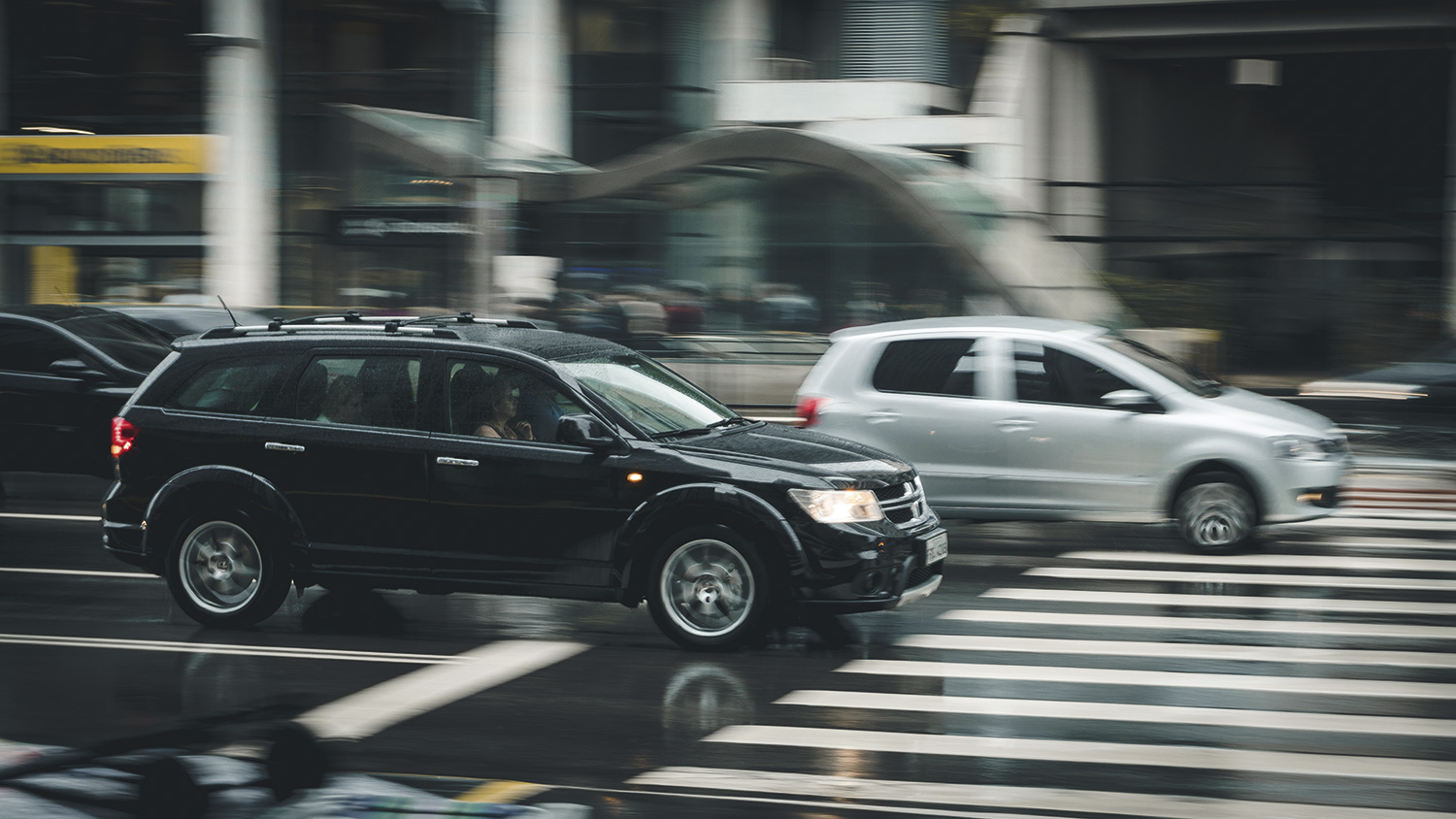
The bicycle must be a comfortable and safe means of transport, all the partners have told us the same. “Depending on the user profile, the perception of safety changes – the perception of a more dangerous route than it is in reality and vice versa – and, consequently, the associated demands,” explains Irazusta. The planning of cycling routes must therefore take account of who and for what purpose. Because it's not the same to make a way to go to a school as to get to an industrial center. “It must be ensured that cities are 8/80, that is, that they are safe for both the eight-year-old and the 80-year-old grandparents. Sometimes it doesn't take much, you have to put furniture, some paint, reduce the facilities to motorized traffic (for example, with speed limitation)... Projects that seek a fairer distribution of space are those that can succeed.”
There is another “myth”: to think that when space is removed from the car there will be agglomerations. The opposite is often the case, as cars gradually disappear with difficulties. On the contrary, the more lanes, although at first it can cushion traffic, the longer it returns to the previous collapse. “Look at what happened in Los Angeles, where there were four rails built two more and then two others, and they all meet. The street should not be designed according to the traffic you see, but according to the traffic you want to see.”
Excessive injection electric car
Edorta Bergua Jiménez, Planning and Promotion Technician for Cycling Roads at the Provincial Council of Gipuzkoa, has carried out an in-depth analysis on the subject: The bicycle in the country of (auto)electric mobility [“The bicycle (car)in the country of electric mobility”, 2020]. Irazusta briefly summarizes the eighteen pages.
Bergo states that the conventional bicycle – mechanical – is the healthiest, most ecological and most economical, and should therefore be encouraged. Electric assisted vehicles present most advantages and benefits of conventional vehicles, being the best option for people with specific needs. It can more easily attract people with physical limitations or older people, as well as driving cars for other reasons. It improves health, it can take us further with less effort, so it has more power to replace the car, it can raise the stakes further and is the basis of cycle logistics. On the other side of the scale: the risk of accidents increases, although the difference is not evident, it is more expensive and harder to maintain, which increases technological dependence. “They are sources of energy, batteries, hydrogen... you have to keep them in mind, but we have to be aware of the possibilities of the electric bicycle,” says Irazusta.
“Bicycle awareness campaigns are necessary, but if there is no clean infrastructure…”
In some countries, measures are being taken to promote electric bicycles, to give workers the possibility of using them as proof or to subsidise the abandonment of cars and the purchase of bicycles, among others. However, it does not see it with the institutional and media momentum of the electric car sector, at the expense of the self-supporting lobby. The protection both receive does not correspond to the sales figures, as Bergua points out in that report: In Europe, ten electric bicycles are sold every time an electric car is sold; in China the difference is even greater (1/20).
“We can therefore ensure that the bicycle is by far the real protagonist of electric mobility, even though the dominant narrative overlooks reality,” Bergua wrote. “This same international trend can be observed in the Spanish State. Between 2013 and 18, 27,224 electric cars were registered and 275,850 electric bicycles were sold.” Most of them are mountain, we have incited Irazusta: “Although this is true, one must take into account, among other things, the rise of bicycles that can be rented. Donostia’s Dbizi service is a good example: every bicycle takes about ten trips a day.”
692 km
To offset the carbon footprint left by making a bicycle, it has to travel 692 kilometers, according to a Trek study. Electricians need more time, but their number is small compared to internal combustion vehicles. Engineers at the Universidad Politécnica de Madrid estimate that each bicycle and electric scooter emits 300 kg of CO2 in its service life (about 20,000 km on average), sixteen times more than a normal car and six times less than a small cylinder engine.
The North American company Bird, which manages the rental service of the city of Louisville, has given data on the electric skateboards. Also in the case of bicycles, the conclusion that can be seen is that private scooters have a longer life expectancy than rented ones, as the latter are less served. 43% of the discharges attributable to the electric scooter occur in the journey of moving to repair areas in vans and returning to the parking lots.
FRAN ÚBEDA Member
of the cooperative Joan
“We want to reverse the precariousness of the cycle logistics sector”
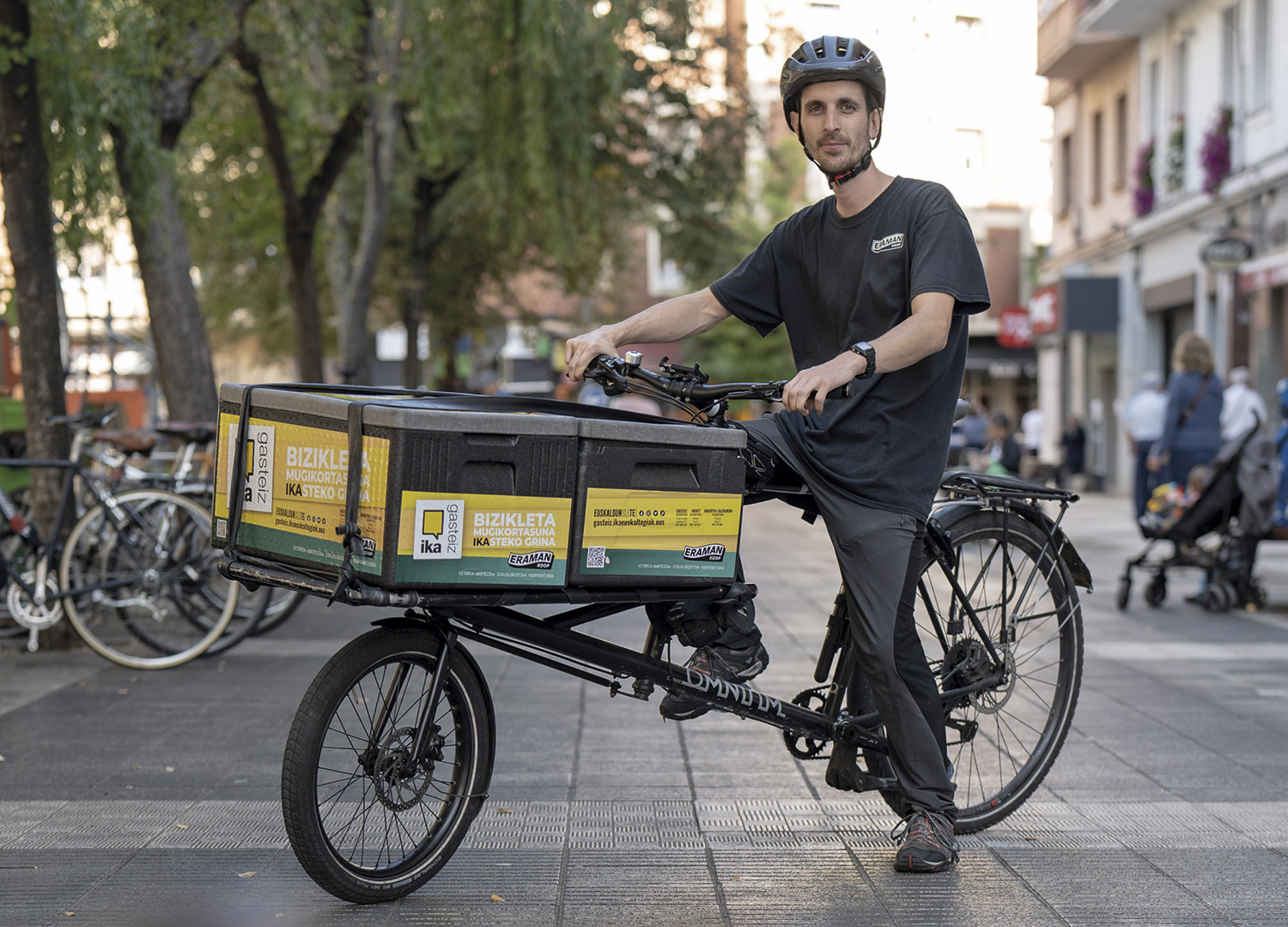
The energy transition is causing an increasing dispersion of the sustainable distribution model, including cycling. The Bicycle Logistics sector is still small, but it is acquiring some form. In Vitoria-Gasteiz there is a fairly stabilized project, the Joan cooperative, founded in 2020, a week before the start of the pandemic. They distribute ARGIA magazine in the capital of Alavesa. And two years ago, the Ziclo-p cooperative was launched in Pamplona. Although there are similar initiatives in Irún, Rentería, Getxo and Baiona, where the limited company La Course has become a cooperative. The Botxo Riders cooperative was unable to move forward.
Four people created the Eramen cooperative, in order to turn the situation around, because the field of cycle messaging is “ultra-precarious,” explains Fran Úbeda Peralta, a project member. The Andalusian is in charge of coordinating the distribution of the journal ARGIA. It speaks intensely of its activity and the circumstances of the cooperative movement in general.
“We are aware that we do the last part, the most enjoyable part of a global wild logistics, but there is something to get in your city bike trips and not in the
van”
They transport bicycle packages as well as essential products, such as medicines and blood samples from the pharmacy to the pharmacy or to the hospitals, and have an agreement with some wine bars to distribute food and beverages to homes. As for package service, they occupy the last part or mile, until the product passes from the postal code to the customer. “We are outsourced by companies like Logi and Tipsa that could do these services because they have realized that bicycle service is fast and effective.” They are aware that in these times when we buy four pairs of shoes online and return three of them, they make the last part of the distribution, "the most pleasing of a fierce global logistics": "We know the package comes from China, etc., I want people to buy in their country or in their neighborhood -- I know I'm surprised -- but there's something to get the deals done by bike in your camper van. In numerical terms, it’s hard to compete with the big ones, and that’s where we are.”
Narrowing poses a risk
It is essential for the cooperative to ensure decent working conditions, for which it is necessary to have a project that pays for hours rather than paying for the number of deliveries. “Previous colleagues at Glovo tell us that the company uses its own language to name workers, for example. For him are the ‘collaborators’, a false autonomous, because they will only work for Glovo. Use a magic logarithm that selects at any time or moves the dealer. In the end you see the employees on the quiet street, with the app on, waiting for the message to arrive. And the company says, ‘You have made eight quotations today.’ Okay, but all that time that cyclists are waiting on the street, you're not going to tell! ? It gives us a lot to pay for hours, because the worker is comfortable, even the restaurant, and the client, who knows what project our worker is a member of.”
Betting on the bicycle is to make the city not “so aggressive”. “It’s hard, we’re not going to change everything, especially in parcel service, where almost everything moves in cars and trucks, but well. We are demonstrating that it can be done. More and more companies are hiring us, fruit, flower and wine shops... We have demonstrated that we are effective, that we do the job quickly.” Does speed not cause stress? “No, when we partner a company or an agreement we try to be profitable without squeezing anyone, that is the basis of working for hours, because in the rest of the time we would put the worker at risk. When I talk about speed, I mean we can move easily, because we have the bidegorri, the road, and sidewalks that are over three meters wide, if there aren't many pedestrians. In addition, we can park easily.”

In addition to those already mentioned, there are more decisions for the benefit of workers. For example, if the head of the platform sees that the storm has erupted or cyclists are severely overwhelmed to meet all demands, the service will be cut off. “The big companies have the dealer available at any time, we started at 8:00 and closed at midnight at the end of the dinner delivery. We're not 24/7. This greatly improves working conditions, because we have the freedom to make a decision at the time.” In the Eramen cooperative, a person also coordinates the requests, who controls what is happening with each distribution. “With Glovo, Uber and the like, if you have a problem, a person knows where they are, you’ll be one of thousands of customers. Our coordinator knows what the dealers are doing, what bicycle each has, how many more trips they can do without having to tighten, when they are more tired, with more encouragement...” To this must be added the proximity to the customer: “It’s an important factor. In some restaurants, for example, they know what I call, they ask me how I am and we exchange a few words.”
Grateful to the city
Úbeda states that one of the keys to the progress of the project is Vitoria itself: “It’s a friendly city to bike, flat and with a relatively good bidegorris network. It also has a culture of support for such projects. I am grateful to the city, I feel love. When you go down the street, someone yells at you: ‘Ei, take it!’ The community is noticeable in the environment.” They are based in the Coronation district, near the Casco Viejo, and if they want to be profitable, at least as far as package service is concerned, they cannot get too far from it, because the benefits are very narrow. “The system is designed for the big ones to make money and the small ones we have to be very careful.” Although they distribute packages near the headquarters, essential products and ARGIA magazines reach the entire capital and work with restaurants from all over the capital.
As for what Vitoria has to improve, he answers: “Security.” “We have a good network of bidegorris, but there is something to improve. In white, do not put in the middle of the line sewers or similar that slip when wet. Signs, access to roads, traffic... are the biggest safety problems”. In the photos we've seen workers wearing a helmet. “Inside Vitoria we are not obliged to dress, but it is a cooperative standard.”
Coopcycle
Among them, Eramun, Ziclo-p, La Course... have created the federation of bicycle logistics cooperatives CoopCycle Euskal Herria to “face capitalist platforms”. The first pedals occurred in the French state and has spread to other European countries, such as Canada, Chile or Mexico. From the world of Glovo and the others, some workers from the companies that the cooperative has assembled intend to revolutionize the model that these large companies represent in order to fight against labor exploitation, based on the social economy, sustainability and democratic management. In other areas they want to channel alliances with projects that share the same philosophy of work and have already taken their first step in Pamplona. Since May, the Ziclo-P and Ondalan cooperatives have reached an agreement to distribute organic food cooked by the latter.
ENEKO GARATE,
Director of Route Books
“In the end bidegorri decides where to go, not your need”
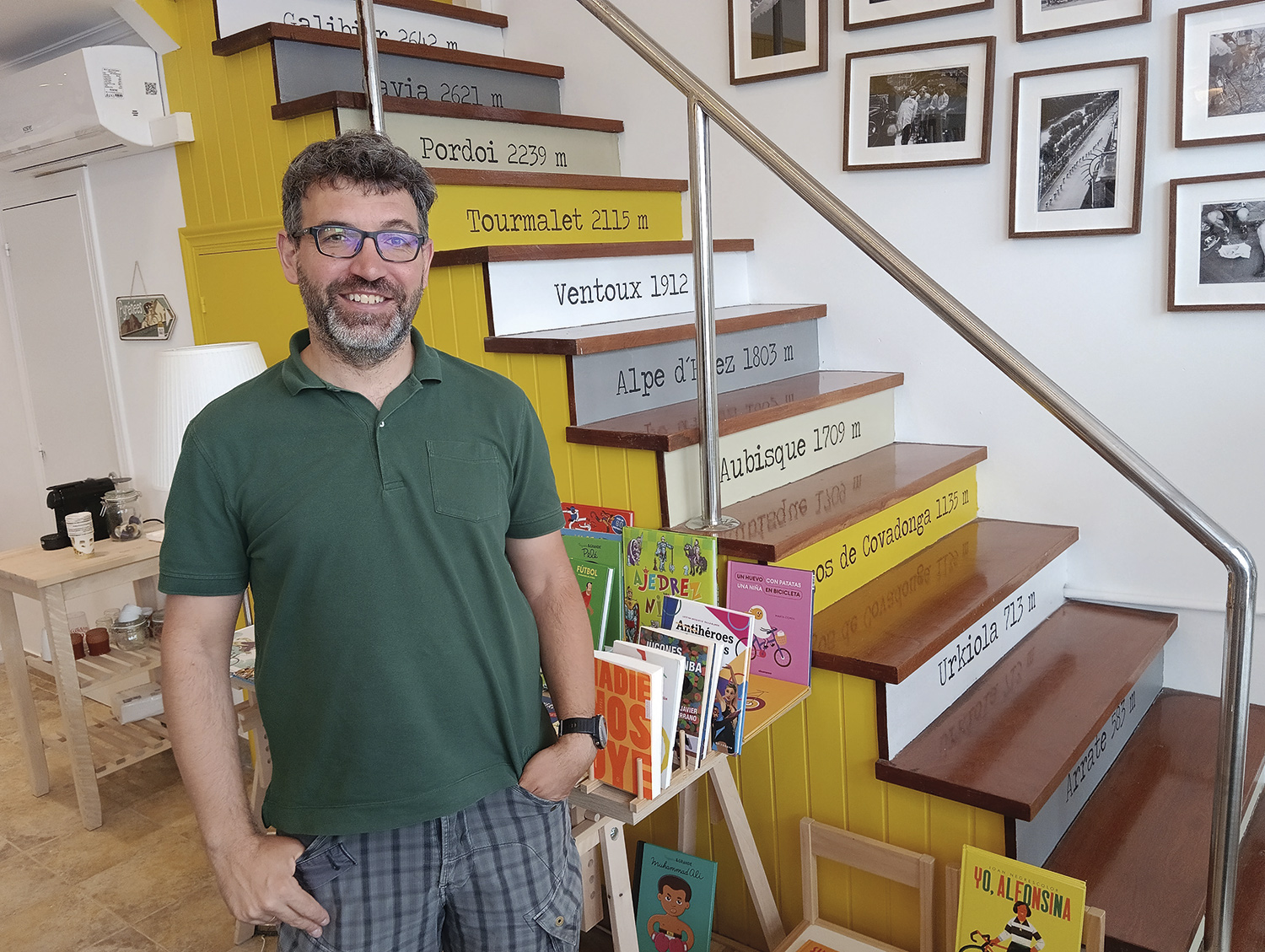
Eneko Garate is the head of the editorial Libros de Ruta. It has its office on Gordoniz Street in Bilbao, near the Ametzola Park, on a bookstore that will satisfy the thirst of readers who love cycling and sport in general. There are biographies of cyclists, travel guides, mechanics, essays, comics, illustrated books... Is the literary offer of other sports, especially that dedicated to the mountain, rich, perhaps due to the romantic touch of both sports?
We have begun to talk about the Tour de France that left Bilbao during the jump from one book to another. “The four winds have claimed that ours is Bike Country, symbol of the Basques or Bilbaínos as if it were a bicycle, but not,” says Garate. “Also from the point of view of sport, I, for example, have two children walking by bicycle, and I have realized that in Bilbao there is no suitable place for training and that they cannot go outside. In Bizkaia there is also no velodrome covered, nor outdoor in the capital.”
In the year 2025 it is intended to begin the works of reform and covering the velodrome Marino Lejarreta de Berriz, linked to the High Performance Cycling Centre project. It would be more, recalling the scrolls of Berriz’s jungle, to say that Bilbao is comfortably behind the platoon, but the panorama of the back of the lights that typed the yellow capital is not so pompous, according to Garate: “I think we have missed the opportunity to take steps and transform Bilbao. The speed limit of 30 kilometers per hour, for example, helps to create a famous city and a good slogan, but realizes that in some streets few drivers respect the rule. Or that of the pedagogical radars, which record their own speed and say whether you are driving wrongly or correctly: all cars pass at a speed of 40-50 km per hour, hear, rather than pedagogical, should put a radar that would involve fines.”
About one million people live in an area of 10 to 15 kilometres. Garate makes it clear: “For bicycle use to rise, there should be no problem going from here to Barakaldo or to Getxo.” There is a bidegorri project underway that will connect Getxo, Leioa, Erandio and Bilbao in two years, all on a good road. “I think doing so is great, but look here.” On the computer in front of it, Google Maps has been shielded to give explanations to a journalist who has the unknown area and the suffocating spider road. The edge of the Nervión points out: “Here it is easy to do something, there is road and there are alternatives for cars. In the Erandio area, however, all this parking lot is used by cars as parking. To build a bidegorri it would be enough to remove the parking lots in a couple of sections and expropriate the land of a factory, for example, there is space.” He says that the bidegorris they make are generally good, but expensive, and that's why they're less than enough. “Between Iurreta and Amorebieta a 7.5 kilometer cycling track has been opened. Even without building a big infrastructure, or mega-bidegorris, you could do a lot of things. But here nobody wants to take the parking lots off because the mayor who takes pro-bicycle measures can lose the election.”
"That's the biggest vacuum, the insecurity of the links to Basauri, Galdakao..."
Garate complains that in Bilbao some bidegorris have been made “in any way”, without being united and guaranteeing security in the entrances and exits where more cars accumulate. “That’s the biggest vacuum, the insecurity of left-right unions, Basauri, Galdakao... They are doing things, twenty years ago there was nothing, but still, sometimes, the works do not leave room for bidegorri, or they are given the meters that have left.”
We have told him that we have read on social media – if not – saying temperate people about the attitude of some agents. “The fact is that some bidegorris look petachos. Here, for example, there is a very useful bidegorri, as there were sections of 10-20 meters unpainted, and as theoretically they were not part of the bidegorri, municipal police officers fined several cyclists. But how we were going to move from one point to another!” he says with surprise. “Fines have also been imposed in the Kasilda Park, including on parents going with children. Adapt a one-meter wide, even one-way road! In the end the bike path decides where to go, not your needs. The rules are, in my opinion, rather diffuse, as if we depend on the mood of the agents.” As one people ironiously remarked, that day he arrived in San Mamés by bicycle, Mayor Juan María Aburto, who deserved a fine, because, as has happened in the same place to several users, he invaded the pedestrian path.
From one city to another by electric bike
After spending a quarter of an hour in a cafeteria waiting for the interview, we realize that people have climbed the cost we have in front of Bilbaobiz on a rental electric bike. “The service is very good,” says Garate, “being electric you can make longer distances and climb the slopes more easily, nobody wants to get to work in half legs.” Whether electric or not, he thinks it would be “nice” to see more bikes in the city. “If it was really practical, surely people would buy their own bicycle, but it must be understood that in Bilbao there are many small houses and that people have not kept the bikes. In addition, some people fear being robbed leaving them in the street.”
We asked him whether, as he saw, the electric bicycle rental service has taken some cars off the road. “I don’t know. Cycling to replace the car should be comfortable and safe. You may have been more affected by the subway, and I would say that the people who were walking have also jumped on the bike. But the car will have left some, but...”
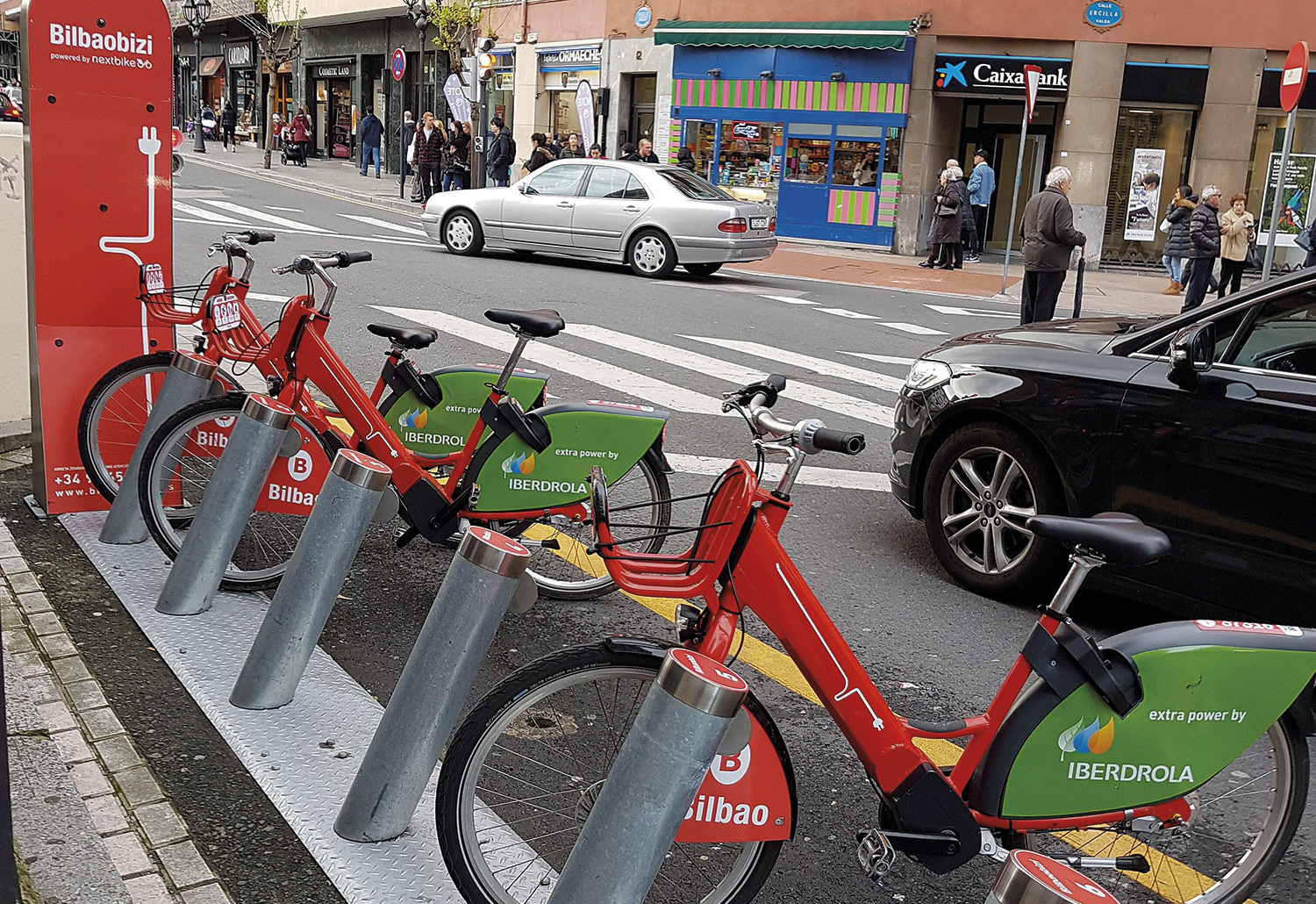
As regards the rental service for electric bicycles, the Bizkaibizi project that has just begun will take the step. It has been opened to the municipalities of Barakaldo, Portugalete, Santurtzi, Sestao, Berango, Bilbao, Erandio, Getxo and Leioa, and besides urban displacements it can travel from one city to another. In total, 650 bicycles distributed in 101 “anchorages”. According to the authorities, the objective is “to provide citizens with a new means of public transport, either by themselves or in combination with other models, be it Bizkaibus, Metro or Euskotren”. In the end we have barely mentioned public transport in the report, but it is also an ally to preserve and interaction with the bicycle is fundamental.
The possibilities of attracting users to bicycles have increased with electric ones. “We spent two hours walking with the mountain and although we have to pedal now the difference is huge,” Garate tells us. Among the disadvantages, “the growing dependence of shops” stands out: “The user with basic knowledge cannot repair changes or brakes. Nor does it have the necessary tools, and if you start working at nothing it would take a long time to try. In the past, we could adapt to the minimum knowledge, but today electronic devices, discs and so on are more difficult to repair.”
Where...
Garate explained to us that in the past many people used bicycles, because most could not buy anything else, but more and more cars, less bicycles in homes. “I would say that the first recovery took place in the late 1980s and early 1990s with mountain biking.” Fifteen years ago, or “perhaps earlier”, with the globalization of the Tour de France, in the time of Lance Armstrong, cycling had a boom. “What was more common here came later to England, the United States, Canada or Israel. In Colombia there has always been a hobby, but unlike before, people are now being attracted with money. On the excuse of the Tour de France there was nothing more to do with the bicycles of some Colombian tourists who came to Bilbao, what cucumbers! If we find a bicycle of EUR 6,000 expensive, imagine what salary is in a much smaller country. Some say that what used to be golf now is cycling. It has attracted people with money, and that can be good for the sector, but it also carries risks. Colnago and Pinarello have behind them investment funds that will bet the same on these companies, Ferrari or any other. They have entered because there is business there.”
Toyota, Audi, BMW, Lancia, Yamaha... electric bikes have been launched by prestigious car and motorcycle brands, flagging for sustainable mobility. Are you willing to revolutionize the distribution of space and banish the car, the king of the jungle?
Climate emergency in the sun
Authorities continue to cut trees to the root both to build roads and car parks and to reshape urban roads and plazas, to end the threat of climate emergency. It has happened on Sangüesa street in Pamplona and on Lehendakari Agirre Avenue in Bilbao. The neighbours of the Maule area complain that they want to turn the old railway into the road. “Making a new path is a project 40 years ago,” explains Frantxoa Camus, member of the collective Les Voix du Saison. “We have to think about infrastructure with current needs. People are getting more and more bikes to go to Maule, we don’t want the car to be used.” Domestic public transport has increased by 40% since 2017.
To have a car (private) in Japan it is mandatory to have a parking (private). The measure seems controversial, as the regulation (the securities systems here) allows the occupation of spaces where the car deposit is public. That is, the problem is conceived as a responsibility... [+]
First of all, we wish to extend our condolences to the family and friends of the woman killed in early August.
The people of Gaintxurizketa are fed up with the disillusionment of the administration and those responsible.
Those of us who live in the neighborhood are forced to... [+]
During the transition, Navarre is the Basque Country until we break our throat, we have always looked indirectly, but with special attention to what happens in the “Community”, as we sometimes say in “Vascongadas”, even in “Basque Country”, as if that way of naming... [+]
Alokatzeko sei auto eman ditu eskuragarri AUPA kooperatibak Baionan, Angelun eta laster Miarritzen.
It is clear that in future we will not have to give up each of our cars. The Beribil will become a luxury because the product of demand will increase kilowatt prices. Nuclear does not cover all the needs, plants are obsolete and the risks of atom pollution that were reported in... [+]













